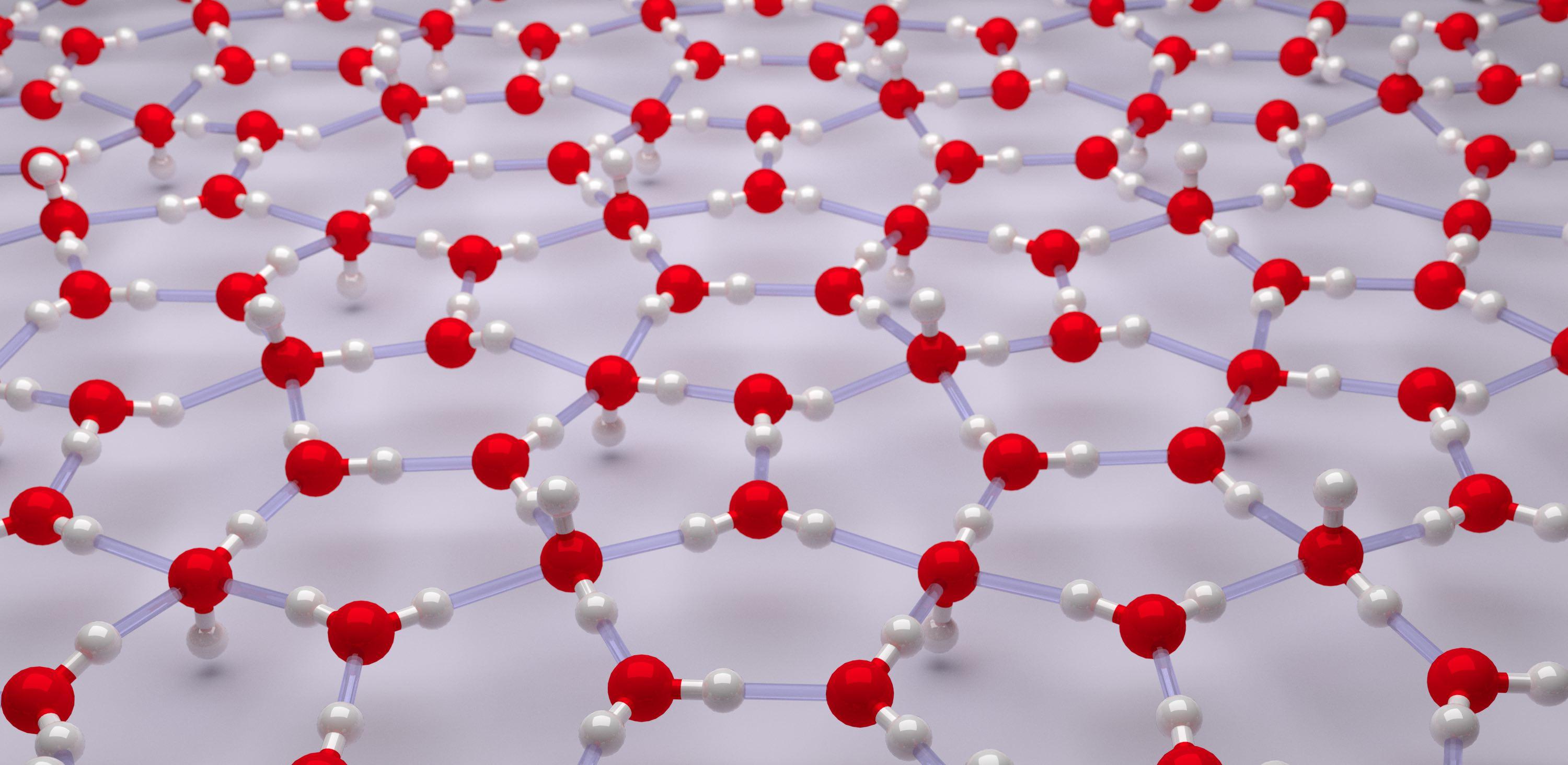
Submitted by Prof. C.J. Pickard on Mon, 26/09/2022 - 10:05
Figure Caption: Pentagonal ice – a two-dimensional form of ice predicted to form when water is squeezed between graphene sheets.
Water can be found trapped in nanoscale cavities, for example in biological membranes, or in minerals. This nanoconfined water behaves very differently to the water we use in everyday life, but it is very difficult to experimentally characterise it.
Using a battery of state-of-the-art first principles theoretical and computational methods a team of researchers from the University of Cambridge, including Prof Chris Pickard of the Department of Materials Science and Metallurgy, have uncovered a wide variety of phases of low dimensional nanoconfined water.
A one-molecule thick layer of water is found to adopt several phases, including a “hexatic” phase and a “superionic” phase. Hexatic water is neither a solid nor a liquid, but something in between. The superionic phase occurs at higher pressures, where the water becomes highly ionically conductive.
“The first-principles phase diagram of monolayer nanoconfined water”, Venkat Kapil, Christoph Schran, Andrea Zen, Ji Chen, Chris J. Pickard and Angelos Michaelides, Nature 609, 512, 2022
https://doi.org/10.1038/s41586-022-05036-x
https://www.cam.ac.uk/research/news/new-phases-of-water-detected

